Try Amazon Audible Plus

Join Amazon Prime - Watch Thousands of Movies & TV Shows Anytime - Start Free Trial Now
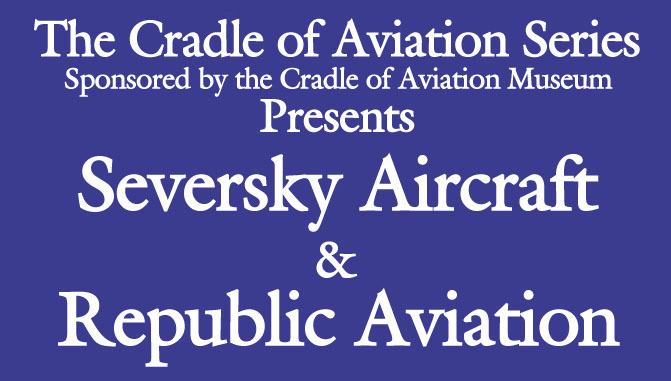 P-47 Thunderbolt: Aviation Darwinism
Chapter Eight:
As North American Aviation's superb P-51 Mustang began arriving in
the ETO, it became obvious that its combination of high performance
and range would soon make it the dominant USAAF fighter. There was
no other fighter available that could truly compare. The P-38 had
adequate range and combat performance, however, it was suffering from
a host of serious technical bugs that would greatly erode confidence
in the big twin engine fighter. The P-47 still reigned supreme at
high altitude. Unfortunately, the P-47D models in service in late
1943 lacked the range to penetrate very far beyond the western border
of Germany. It was within this context that the command of the VIII
Air Force made the decision that the Mustang would be the primary long-range
escort fighter. The P-38 and P-47 would be reassigned to the IX Air
Force where they would be used with great effect in the role of tactical
fighter-bomber. Other factors weighed in the P-51's favor. Its initial
cost was considerably less than the Thunderbolt and nearly half that of
the P-38. The logistical advantages were noteworthy as well. A twin
engine fighter certainly requires additional manhours to keep the aircraft
combat ready. Two engines also use considerably more fuel for flight
over a given distance. The Mustang's Packard V-12 was more fuel efficient
than the large and powerful Pratt & Whitney of the P-47. It seemed
that the Mustang would remain at the top of the USAAF heap.
P-47 Thunderbolt: Aviation Darwinism
Chapter Eight:
As North American Aviation's superb P-51 Mustang began arriving in
the ETO, it became obvious that its combination of high performance
and range would soon make it the dominant USAAF fighter. There was
no other fighter available that could truly compare. The P-38 had
adequate range and combat performance, however, it was suffering from
a host of serious technical bugs that would greatly erode confidence
in the big twin engine fighter. The P-47 still reigned supreme at
high altitude. Unfortunately, the P-47D models in service in late
1943 lacked the range to penetrate very far beyond the western border
of Germany. It was within this context that the command of the VIII
Air Force made the decision that the Mustang would be the primary long-range
escort fighter. The P-38 and P-47 would be reassigned to the IX Air
Force where they would be used with great effect in the role of tactical
fighter-bomber. Other factors weighed in the P-51's favor. Its initial
cost was considerably less than the Thunderbolt and nearly half that of
the P-38. The logistical advantages were noteworthy as well. A twin
engine fighter certainly requires additional manhours to keep the aircraft
combat ready. Two engines also use considerably more fuel for flight
over a given distance. The Mustang's Packard V-12 was more fuel efficient
than the large and powerful Pratt & Whitney of the P-47. It seemed
that the Mustang would remain at the top of the USAAF heap.
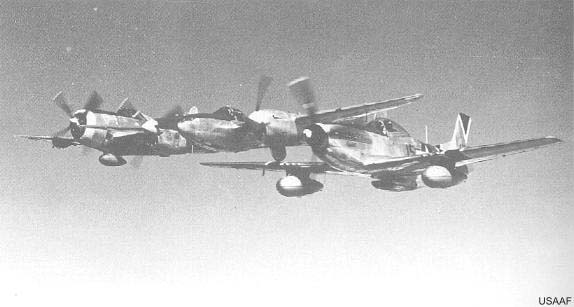 The Big Three of American fighters. Flying over Saipan in the tightest
of formations are the fighters that devestated the Luftwaffe and the Air Forces
of Imperial Japan. Within a few months the long ranging P-47N would join
the P-38 and P-51 to wreak destruction on the Japanese over their home islands.
The Big Three of American fighters. Flying over Saipan in the tightest
of formations are the fighters that devestated the Luftwaffe and the Air Forces
of Imperial Japan. Within a few months the long ranging P-47N would join
the P-38 and P-51 to wreak destruction on the Japanese over their home islands.
The adoption of the P-51D by the VIII Air Force and the transfer of
most P-47s to the air to ground role was seen with foreboding by Republic.
Combined with the Air Material Command's obsession with the Fisher
(GM) XP-75 long range escort fighter, the sudden preeminence of the
P-51 meant that there would be little reason for the USAAF to continue
to purchase the Thunderbolt. The Mustang was a proven commodity,
whereas the XP-75 would prove to be little more than a total failure.
Nonetheless, the Air Material Command believed the hype coming out of
Fisher and the War Production Board was persuaded by General Motors
to order 2,500 of the P-75A (including 5 prototypes). These were never built
once the USAAF realized that the XP-75 was totally unsuited in the role
for which it was designed. Despite the wasted millions in much needed
R&D dollars and the tragic misuse of skilled labor and factory space, the
basic requirement still remained. The future need for
adequate escorts for the B-29s expected to bomb mainland Japan would
be the impetus for virtually all future fighter procurements. The
latest models of the Thunderbolt, while possessing adequate range
capabilities for the ETO, were not going to cut the mustard in the
vast Pacific where a fighter would need a true combat radius of at
least 1,000 miles. The latest P-47D-40-RA could not quite make that
distance, engage in combat and have anything resembling a fuel reserve
for the return trip.
Fortunately, Republic had been paying attention to developments with
the P-51 and were hard at work on a long range Thunderbolt as early
as November of 1943. The same P-47C-5-RE that had been used as development
mule for the Pratt & Whitney R-2800 C series was fitted with 27 inch
long extension inserts in each wing. This was done largely to test the handling
of the aircraft. No provision was made to carry any additional fuel
in the wings. These tests revealed that the roll rate had suffered
and the wings were clipped at the tips and a squared off cap was fitted.
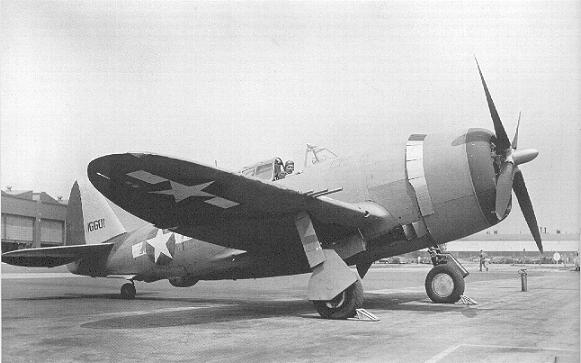 This is the only existing photo of the "unofficial" XP-47M test mule.
After being used as a testbed for the Pratt & Whitney R-2800 C series
engine, it was fitted with 27 inch long wing extensions (at the wing root),
and used to test the flight characteristics of the modified wing. When the
request for a long range Thunderbolt came along, this fighter was wheeled
out, dusted off and presented to the Air Material Command. The photo shows the
fighter prior to receiving the modified wing.
In May of 1944, an Expenditure Order was issued and $101,000 was
allocated to Republic to develop a “wet” wing to be installed on one
of the three YP-47M prototypes. Within 30 days Republic was able to
present a test report based upon their earlier testing, along with a
full set of drawings as a proposal to the Air Material Command. The
new drawings illustrated the new wing design. The inserts were now
just 18 inches in length, and contained an integral fuel tank for 100
gallons of fuel. In the contract, the #3 YP-47M was specified as the
test aircraft (S/N 42-27387). Twenty hours of flight time were expected
after the new wing had been installed. In July, the fighter was officially
designated as the XP-47N and the unofficial test mule was re-designated
as a P-47C-5-RE once again. The final disposition of the test mule is
unknown. It did, however, retain its new wings and the more powerful C
series engine for as long as the aircraft appeared on the company inventory.
The modifications to the existing YP-47M were considerable. Aside
from simply installing the wing inserts and fuel tanks, the flaps
were required to be redesigned, and the ailerons had to be modified
to fit with the new squared-off wing tips. Due to spacing the wings
out from the wing root, the landing gear track increased by more
than 3 feet. The overall wing span had increased to just over 42
ft 6 inches. The empty weight of the fighter had gone up by nearly
half a ton to 12,950 lbs.
This is the only existing photo of the "unofficial" XP-47M test mule.
After being used as a testbed for the Pratt & Whitney R-2800 C series
engine, it was fitted with 27 inch long wing extensions (at the wing root),
and used to test the flight characteristics of the modified wing. When the
request for a long range Thunderbolt came along, this fighter was wheeled
out, dusted off and presented to the Air Material Command. The photo shows the
fighter prior to receiving the modified wing.
In May of 1944, an Expenditure Order was issued and $101,000 was
allocated to Republic to develop a “wet” wing to be installed on one
of the three YP-47M prototypes. Within 30 days Republic was able to
present a test report based upon their earlier testing, along with a
full set of drawings as a proposal to the Air Material Command. The
new drawings illustrated the new wing design. The inserts were now
just 18 inches in length, and contained an integral fuel tank for 100
gallons of fuel. In the contract, the #3 YP-47M was specified as the
test aircraft (S/N 42-27387). Twenty hours of flight time were expected
after the new wing had been installed. In July, the fighter was officially
designated as the XP-47N and the unofficial test mule was re-designated
as a P-47C-5-RE once again. The final disposition of the test mule is
unknown. It did, however, retain its new wings and the more powerful C
series engine for as long as the aircraft appeared on the company inventory.
The modifications to the existing YP-47M were considerable. Aside
from simply installing the wing inserts and fuel tanks, the flaps
were required to be redesigned, and the ailerons had to be modified
to fit with the new squared-off wing tips. Due to spacing the wings
out from the wing root, the landing gear track increased by more
than 3 feet. The overall wing span had increased to just over 42
ft 6 inches. The empty weight of the fighter had gone up by nearly
half a ton to 12,950 lbs.
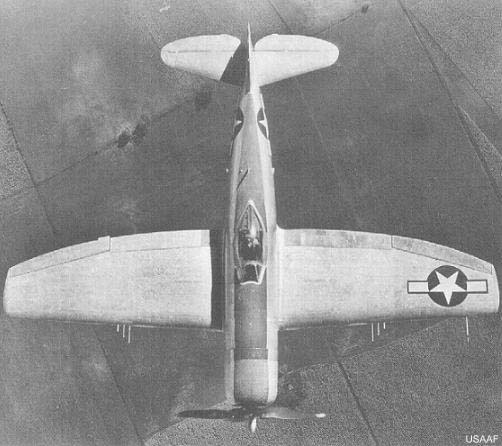 This wonderful view of the XP-47N shows its new wing planform to great
effect. The squared-off wing tips makes P-47N indentification easy. Note that
the Prototype fighter does not yet have the dorsal fillet installed.
This wonderful view of the XP-47N shows its new wing planform to great
effect. The squared-off wing tips makes P-47N indentification easy. Note that
the Prototype fighter does not yet have the dorsal fillet installed.
The XP-47N took to the air for the first time on July 22, 1944. Test
comparisons were made with a P-47D-30-RE throughout the early portion
of the evaluation period. Much to everyone's surprise, the XP-47N,
with its greater wingspan and higher weight actually proved to have
better roll performance than the D model. At 250 mph TAS, the N attained
a maximum roll rate just over 100 degrees/second. The P-47D-30-RE could
manage but 85 degrees/second at the same speed. At higher speeds, the N
widened the gap further. In mock combat with a P-47D-25-RE, the new
fighter proved to be notably superior in every category of performance.
In short, the XP-47 waxed the venerable D model regardless of who was
piloting the older fighter. The new wing was part of this newfound
dogfighting ability, however, the more powerful C series engine played
a role too. The additional horsepower allowed the N to retain its energy
better than the older Thunderbolt. Perhaps the greatest performance
increase was in maximum speed. Though not as fast as the stunning
P-47M, the heavier N was fully 40 mph faster than the P-47D-25-RE
and could generate speeds 30 mph greater than its principal rival,
the Mustang. Scorching along at 467 mph @ 32,000 ft., the N could not
be caught by any fighter in regular service with any air force on
earth with the single exception of its M model sibling. This combination
of wing and engine had pushed the N model up to the top rank of the
superlative prop driven fighters then in existence.
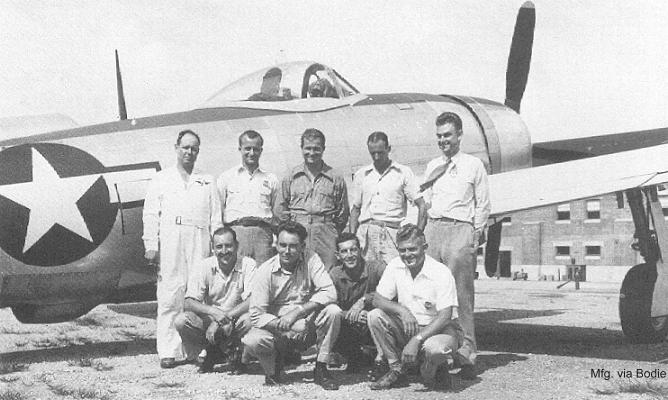 Republic employed some of the nation's finest test pilots to test the
XP and YP-47N prototypes. The pilots pictured here posing with a new N model, standing,
from left to right; unknown mechanic, Ken Jernstedt, J. Croft, Frank Simpson, and Parker Dupouy.
Kneeling are; Carl Bellinger, Peter Collins, Fillmore Gilmer and another unknown. Jernstedt
and Dupouy were both veteran combat pilots with Chennault's famous American
Volunteer Group (AVG), also known as the Flying Tigers.
Republic employed some of the nation's finest test pilots to test the
XP and YP-47N prototypes. The pilots pictured here posing with a new N model, standing,
from left to right; unknown mechanic, Ken Jernstedt, J. Croft, Frank Simpson, and Parker Dupouy.
Kneeling are; Carl Bellinger, Peter Collins, Fillmore Gilmer and another unknown. Jernstedt
and Dupouy were both veteran combat pilots with Chennault's famous American
Volunteer Group (AVG), also known as the Flying Tigers.
The testing program included determining the maximum range of the
fighter. This was done with various combinations of fuel loads and
external drop tanks. Ultimately, a test flight was made from Farmingdale
to Eglin Field in Florida. The XP-47N took off with two 315 gallon
drop tanks hanging from the under-wing hardpoints. Usable fuel in
these tanks totaled 600 gallons. Added to the internal fuel load,
the N eased off the runway with 1,170 gallons of fuel (usable). At
a gross weight of 20,166 lbs., the Thunderbolt headed south in company
with a P-47D chase plane. Arriving off the coast, east of Elgin in
3 hours, 44 minutes, the external tanks were dropped. Another P-47D,
already waiting at Elgin, took on the N in a mock dogfight that lasted
for twenty minutes. The throttle was advanced to military power for
15 minutes of this time, with an additional five minutes in the War
Emergency Power (WEP) detent. After these fun and games were concluded
the N was turned around and flown back towards Farmingdale. Heavy weather
over Long Island caused the plane to divert to Woodbine, New Jersey.
Having flown 1,980 miles, total fuel usage was measured at 1,057.5
gallons. There was still more than 112 gallons of usable fuel remaining
in the main fuselage tank, enough for another 330 miles @ 1,700 rpm
in auto-lean. The XP-47N was now the king of long-range single engine
fighters (the all time leader of long range escorts was the P-38L-1-LO,
which could claim a combat radius of nearly 1,500 miles under ideal
conditions).
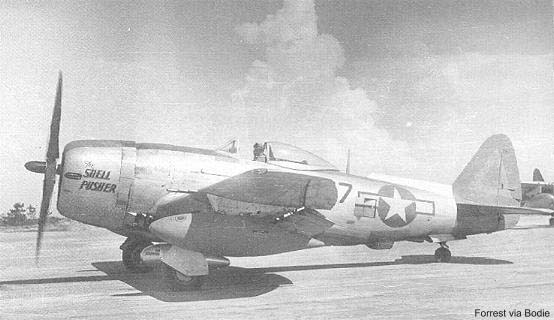 Lt. Robert Forrest performs his pre-takeoff run-up on the ramp at le Shima.
This P-47N-2-RE is loaded with one 75 gallon drop tank and two 165 gallon
P-38 drop tanks filled with Napalm. Forrest flew with the 463rd Fighter
Squadron of the 507th Fighter Group.
Lt. Robert Forrest performs his pre-takeoff run-up on the ramp at le Shima.
This P-47N-2-RE is loaded with one 75 gallon drop tank and two 165 gallon
P-38 drop tanks filled with Napalm. Forrest flew with the 463rd Fighter
Squadron of the 507th Fighter Group.
Before the first production P-47N was built, that old bugga-boo of
insufficient side plate area needed to be addressed. Lessons learned
with the late models of the P-47D indicated that the dorsal fillet
applied to those fighters did not provide quite the area required to
fully offset the low speed rudder over-balance problem. The engineers
at Republic designed a larger dorsal fillet and installed it on the
XP-47N. This proved to do the trick, however, it was not an eye-appealing
solution. Certainly, the approach taken by North American and Grumman
was more attractive as well as functional. Then again, no one ever accused
the Thunderbolt of being pretty.
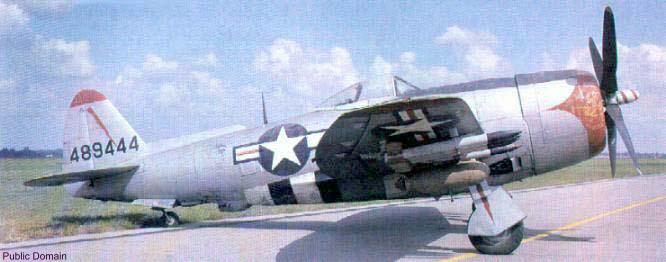 This P-47N-25-RE would eventually find its way into the Cradle of Aviation
Museum's collection. In this undated photo, the fighter appears in postwar
livery. The ordnance under the wings is certainly deactivated for display.
There even seems to be something akin to ETO invasion stripes on the bottom
of the fuselage, just aft of the wing. This photo does illustrate the
N model's unique dorsal fillet to good effect.
This P-47N-25-RE would eventually find its way into the Cradle of Aviation
Museum's collection. In this undated photo, the fighter appears in postwar
livery. The ordnance under the wings is certainly deactivated for display.
There even seems to be something akin to ETO invasion stripes on the bottom
of the fuselage, just aft of the wing. This photo does illustrate the
N model's unique dorsal fillet to good effect.
Eventually, 1,816 P-47Ns were completed before the cancellation of
the contract after Japan surrendered. The big fighters were deployed
to the Pacific and were beginning to demonstrate their full potential
when two atomic bombs put an end to the conflict. After the war, most
of the P-47Ns were allocated to Reserve and Air Guard units, where they
served faithfully until they were replaced by jets in the mid 1950s.
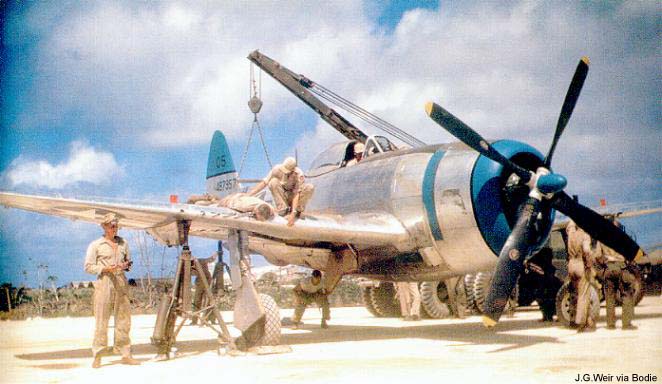 Bore sighting the guns on any fighter was meticulous work. To obtain
the best result, all the guns were sighted to focus on a specific point.
Often, the pilot would specify that point. This P-47N-1-RE served with the
318th Fighter Group operating out of le Shima.
Bore sighting the guns on any fighter was meticulous work. To obtain
the best result, all the guns were sighted to focus on a specific point.
Often, the pilot would specify that point. This P-47N-1-RE served with the
318th Fighter Group operating out of le Shima.
With the outbreak of war in Korea in 1950, the P-51D (now designated the F-51D),
was rushed into the fray and did solid work as a fighter-bomber. However,
hundreds of P-47s were in service stateside and were never called into
service against the North Koreans or later, the communist Chinese. Certainly,
there was no doubt that the P-47 was better suited for air to ground close support.
It could carry a far greater load of ordnance and was considerably more resistant
to ground fire and flak. So, why was the P-47 (F-47) not used? The Thunderbolt's Navy alter-ego,
the F4U Corsair, was used to great effect, and like the P-47, was far more rugged
than the Mustang with its fragile Prestone cooling system. To this day, no
one has adequately addressed this question. When the chips were down and the
U.N. forces were pinned in the Pusan perimeter, where were the Thunderbolts?
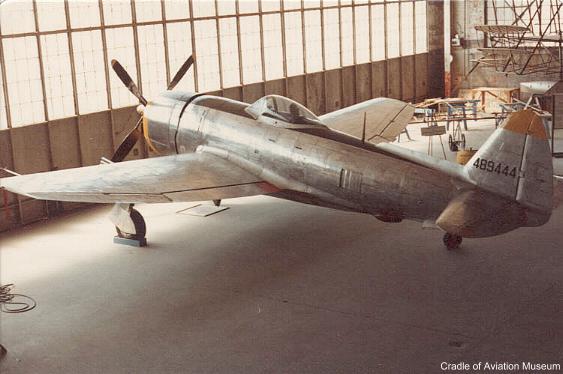 This the same P-47N-25-RE, S/N 44-89444, shown earlier. Here it has been stripped of its
postwar markings and has had the cowling ring and rudder tip painted yellow.
It was in this condition that the fighter was transferred to the Cradle of Aviation Museum.
This the same P-47N-25-RE, S/N 44-89444, shown earlier. Here it has been stripped of its
postwar markings and has had the cowling ring and rudder tip painted yellow.
It was in this condition that the fighter was transferred to the Cradle of Aviation Museum.
The P-47 would go on to serve in nearly every Air Force in the free
world. It left behind a legacy that can hardly be matched by its
contemporaries. Sure, the P-51 is virtually worshiped by its masses
of fans, but the Mustang could do nothing that the P-47, in its many
guises, could not do or had already accomplished. Ultimately, more Thunderbolts
were produced than any other American fighter in World War Two. The mighty Thunderbolt
broke the back of the Luftwaffe and pounded the Wehrmacht without
mercy. It proved to be too much for the Japanese to handle and was
giving those same Japanese the identical working-over it had given
the Germans. Then, it was suddenly no longer needed after the two
atomic blasts that introduced the nuclear age to a world that to this day, lives
under the threat of nearly instant mass destruction.
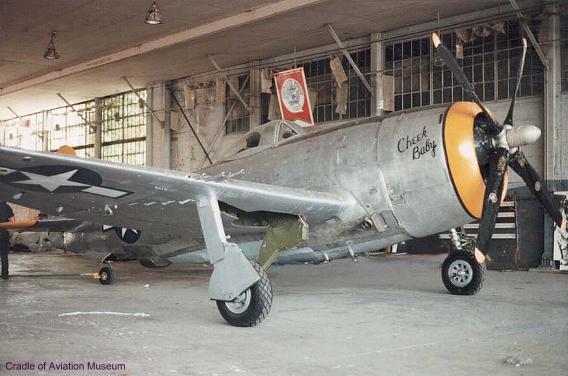 In this photo, the Museum's P-47N has been painted in wartime livery and
is standing by to be moved to the display hanger. Today, the fighter is polished
to a high gloss and is one of the finest examples of the P-47 line to be found
anywhere.
In this photo, the Museum's P-47N has been painted in wartime livery and
is standing by to be moved to the display hanger. Today, the fighter is polished
to a high gloss and is one of the finest examples of the P-47 line to be found
anywhere.
Looking back at World War Two, we can see that before the days of stealth
technology and smart weapons, real pilots took real airplanes into harms way.
They depended upon the rugged reliability of their simple aircraft and their skills
as pilots to get the mission accomplished and live another day to fly again.
If anyone should desire to see a true definition of durability and
versatility in W.W.II airpower, they need not look any further than the
remarkable Republic P-47 Thunderbolt.

Afterward:
Special thanks is in order to my kind, generous friend and benefactor,
Warren Bodie. Without Warren's wonderful research and terrific photos,
this story would not have been possible. I can think of no one who
can match Warren's knowledge of aviation and in particular, American
WWII aviation. This story is as much a product of Warren's work as it
is mine. In every sense of the meaning, Warren is the co-author of
this story.
I would also like to offer my sincere thanks to Tom Gwynne and the
staff of the Cradle of Aviation Museum. I was provided with generous access
to materials and photos. The folks at CAM are deserving of much
credit for their dedication to preserving the aviation heritage of
this nation and specifically, that of Long Island, the true cradle
of American aviation.
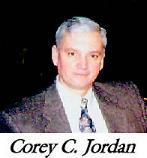
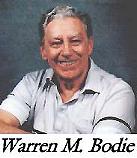
Bibliography:
Bodie, Warren M., “Republic's P-47 Thunderbolt: Seversky to Victory.”
Bodie, Warren M., “The Lockheed P-38 Lightning.”
Boyne, Walter, “Clash of Wings: WWII in the Air.”
Dean, Francis, “America's Hundred Thousand: U.S. Production Fighters of WWII.”
Ferguson & Pascalis, “Protect and Avenge: The 49th Fighter Group in WWII.”
Freeman, Roger, “Thunderbolt, A History of the Republic P-47.”
Freeman, Roger, “The Mighty Eighth.”
Hammel, Eric, “Air War Europa.”
Johnson, Robert, “Thunderbolt!”
Scutts, Jerry, “P-47 Thunderbolt Aces of the 8th Air Force.”
Return to the Planes and Pilots of WWII
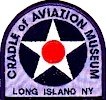 Return to the Cradle of Aviation Museum
Return to the Cradle of Aviation Museum

Unless otherwise indicated, all articles Copyright © Jordan Publishing Inc. 1998/1999/2000.
Reproduction for distribution, or posting to a public forum without express written
permission is a violation of applicable copyright law. The Cradle of Aviation
Museum patch is the property of the Cradle of Aviation Museum.
Reproduction for distribution, or posting to a public forum without the written permission
of Jordan Publishing Inc. is prohibited.

 P-47 Thunderbolt: Aviation Darwinism
Chapter Eight:
P-47 Thunderbolt: Aviation Darwinism
Chapter Eight:

 P-47 Thunderbolt: Aviation Darwinism
Chapter Eight:
P-47 Thunderbolt: Aviation Darwinism
Chapter Eight:













